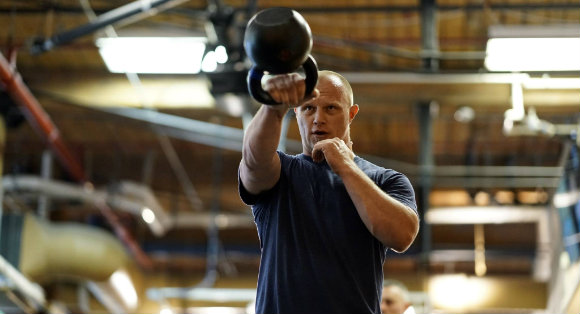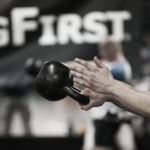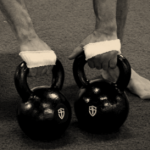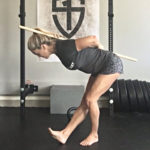“Learn how to separate the majors and the minors. A lot of people don’t do well simply because they major in minor things.”—Jim Rohn
I’m relatively sure that Mr. Rohn was not referring to exercise selection when he said this, but it nails one of the biggest issues in programming and exercise selection. We love to major in exercises that should be minors. Or, put another way, I think there is confusion between spices and the main dishes.
Spices add flavor and are the secret to great main dishes. However, outside of garlic (I mean, who hasn’t eaten an entire head of roasted garlic—or was that just me?), spices make horrible main dishes. If someone made you a nice loaf of nutmeg or a salad of basil, I think you would be wishing for a different main dish. But sprinkle a bit of nutmeg into a French toast mix or a bit of basil in a tomato sauce and the ordinary becomes extraordinary.
Exercise works the same way.
An Example of Spice: The Kettlebell Arm Bar
Sprinkling in a “spice” like a kettlebell arm bar can assist with taking your get-ups from ordinary to extraordinary. That’s because the kettlebell arm bar can help to stabilize a shoulder lacking some motor control or it can mobilize a stiff shoulder so the overhead position can become more stable for one person and easier to access for another.
For the individual needing stability and motor control, they may only need to be in side-lying with the knee on the ground and a properly positioned shoulder (proprioceptive vertical) so the “stuff” responsible for a stable shoulder can learn to do its job (the details of which are beyond the scope of this article). This version or portion of the kettlebell arm bar should be held as long as there is safe progress in letting the shoulder/body learn but not so long that fatigue sets in.
For the individual needing mobilization, they may roll to the same position as the motor control version but then continue to attempt to turn the hips toward the ground (after straightening the leg down beside the other limb), and therefore perform a bit of a bottom up t-spine rotation (not a huge amount) and get a great effect on the anterior chain of the shoulder.
Key points:
- The fist faces the direction you are turning.
- You maintain a straight line from the fingertips of the bottom arm to the feet, and you don’t hyperextend the spine.
- Proprioceptive vertical is maintained and the kettlebell is not allowed to pull the shoulder into an unsafe hyperextended position. (Don’t try for a stretch.)
- The position is not held to fatigue and failure.
That is a lot of spice out of one drill!
Identify Your Main Dish
Within the SFG curriculum, we discuss keeping drills and skills in perspective. As discussed, a drill like an arm bar may address a motor control or mobility issue, but the skill we want to enhance is the military press or the get-up. Due to the benefit that comes from a drill like an arm bar, it can be easy to want to “make a main dish of it” or “major in it.” But drills as majors can overload the system, reduce the benefits, and take the emphasis off the real skill we want to enhance.
Look at your own programming (I can’t) and start to separate your exercise selection into drills and skills (or spices and main dishes, if you like). Are you pursuing the Simple & Sinister goal? Halos are a spice not a main dish. Goblet squats are a spice not a main dish. In S&S, the goals are the swing and the get-up, and these should be your “majors.” But deadlifts and halos might be the “minors” you use as drills to enhance the skills/majors/main dishes.
You Can’t Eat Spices for Dinner
Sometimes a minor begins as a major and then becomes a minor again. A student entering kettlebell training may “major” in the kettlebell deadlift for a time, but as their skill develops and the kettlebell swing can be taught, then the deadlift becomes a spice/minor to enhance the swing. And there is nothing wrong with that scenario.
But sometimes a minor becomes a major simply because we are better at the minor drill and still not comfortable with the major skill. For example, the bottom up kettlebell press is an excellent drill for finding an individual pressing groove and identifying strength differences between sides, but it is a spice for the main dish of the kettlebell military press. As a student is finding their groove with the bottom up kettlebell press, they may become enamored of it and begin to focus on it too much. This can lead to not transferring the drill to the goal skill and losing the lockout position (the bottom up kettlebell press lockout position is different from the military press lockout).
We do love to train our strengths, but it is the improvement of our weaknesses that can really drive us to our goals. So again, take a look at your training. Are you sprinkling on a spice or majoring in a minor? This revelation may just hold the key to achieving your goal.










Last weekend I attended the sfg1 cert. in Chicago at the dome. I passed my skills well. However I did not pass the snatch test. I am looking for specific snatch test programming to make the snatch test happen for me. I have heard many people say the followed Brett Jones programming. Where do I find that?
N.D., it’s the article you commented on earlier, the SFG Prep Guide
N.D.
As Nikki said – it is in the Level 1 prep guide
https://www.strongfirst.com/strongfirst-sfg-kettlebell-certification-prep-guide/
Let me know if you need any more assistance and I’m sure you will knock off your snatch test soon
Brett
Thank you so much for your wise counsel! I know so much of the snatch test is “mental” for me. I am a 46 yr old female at 138lbs. I can do the snatch test with the12kg with no problem. As soon as I try with the 16kgs I fall apart. I know I need more cardio endurance. I am going to implement this plan starting this week/Tuesday. I have approximately 10 weeks to retest (July 29th/last day). I will repeat this schedule every week correct? I don’t want to wait until the last minute to re-test.. Trying to figure out timing towards the last week etc.
N.D.
The heavier one-arm swings will be key to making the 16kg feel “light” – pop the 20 kg to head level and the 16 will feel good for snatches.
So you will have heavier swing day, a light volume day and a density training day.
Another option on the Density training day is to do 5 reps every 30 seconds and total a hundred – then increase reps and decrease sets to keep the total volume at 100 reps.
Thank you again!
Love this analogy, definitely helps look at programming that way. Cheers for another gold nugget, Brett!
I appreciate the analogy. I also divide my movements into primary and support categories. Depending on my goals at the time, my primaries can become support and vice-versa.
Great article, and explains well that a particular exercise can be a main dish at some times, or a spice at others. It all depends on your goals.
I appreciate your wisdom, Brett!
Great article Brett thank you, will make sure I spice my training up properly 🙂
I think this was a good article.
I look at bodyweight exercises the same way. I divide them in exercises (dishes) and feats of strength (spices). A human flag is a spice, while a pull-up is the main dish.